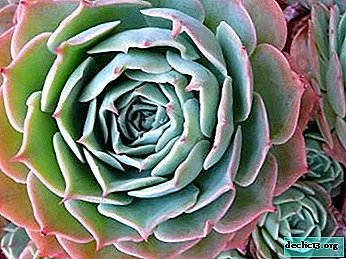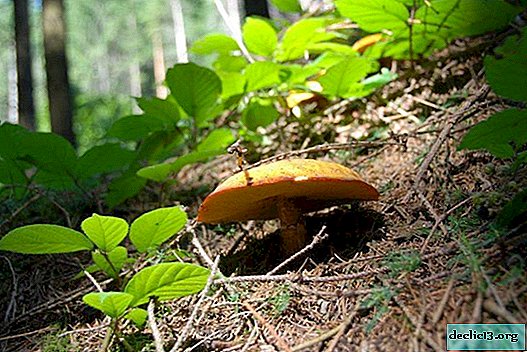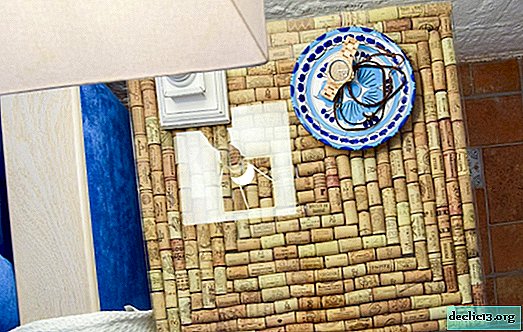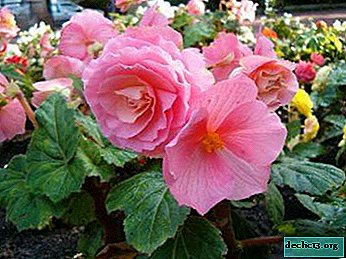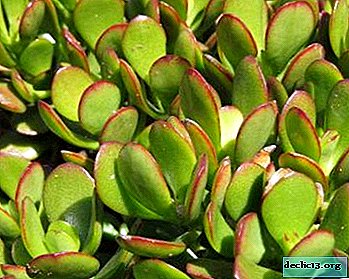How and why use Fitosporin for orchids?
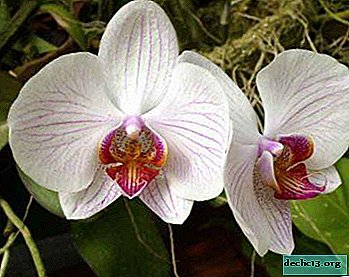
Some gardeners purposefully grow members of the Orchidaceae family. They believe that the living room and bedroom with their help will turn into a blooming garden at any time of the year. Getting up in the morning and casting a casual look at the window, they will have the feeling that they are resting in an exotic country.
But we should not forget that only a healthy plant will delight with flowering, therefore, due attention should be paid to proper care. This article will discuss how to prevent the emergence and development of pests on the orchid.
What it is?
Fitosporin is a new microbiological drug. It was developed to combat fungal and bacterial diseases that affect:
- home plants;
- Shrubs
- fruit;
- vegetable crops.
It is useful when rooting cuttings before transplanting. is he It is famous for its speed of exposure: immediately after processing, it begins to act.
What is it used for?
 Systemic preparation. It quickly spreads through the vascular system of the plant. Its basis is a spore culture that will stop bacterial and fungal diseases by the products of its vital activity. It is effective in combating:
Systemic preparation. It quickly spreads through the vascular system of the plant. Its basis is a spore culture that will stop bacterial and fungal diseases by the products of its vital activity. It is effective in combating:
- powdery mildew;
- different types of rot;
- Fusarium infection
- bacteriosis.
Fitosporin is an assistant to orchid-amateur gardeners, but the result depends on many indicators. Not always the first time they destroy the pest (the effectiveness varies between 65-95%). As it is low toxic, use in an apartment will not lead to severe poisoning.
When can not be used?
There are no cases when the use of Fitosporin is prohibited. It does not harm, since it contains live bacteria, but with frequent use it does not benefit from it.
Release form
- Liquid or aqueous suspension with a titer of at least one billion living cells and spores in one milliliter.
- Powder. It is packaged in bags with a weight of 10 and 30 grams. One teaspoon contains 3-3.5 grams of powder.
- Paste. Her weight is 200 grams. In one gram, at least 100 million living cells.
Structure
Being a natural biological fungicide, there is nothing superfluous in its composition - only living cells and spores of soil bacteria Bacillus subtilis strain 26D. These bacteria are not afraid:
- frost
- heat;
- drought.
If the conditions are unfavorable for them, they will turn into disputes. In addition to the drug, only with live bacteria they sell the product with Gumi, i.e. with additional nutrients, and more specifically with:
- potassium;
- nitrogen;
- phosphorus;
- in chalk.
What effect does the plant have?
 Using a herbal medicine, they struggle with the following problems:
Using a herbal medicine, they struggle with the following problems:
- The fight against wilting.
- Signs of scab.
- The appearance of root rot.
- Fighting the black leg.
- Signs of late blight.
Florists use the drug in the processing of planting material. It is indispensable during the flowering and growing season. If the orchid has suffered from pests, and there are no living places on it, it will not help. In this case, use more powerful means.
Safety precautions
Fitosporin is a drug that has been assigned the fourth hazard class for humans and the third for bees. Inaccurate use, it causes irritation of the mucosa. Phytotoxicity is not inherent in it.
When processing this preparation put on special clothes and rubber gloves. Working with him, they do not smoke, eat or drink. If during use the drug gets on the mucous membranes or skin, the area is washed under running water. In case of accidental ingestion in the digestive tract, they drink 3-4 glasses of water, induce vomiting and drink activated charcoal.
Where and for how much can I buy?
In St. Petersburg, a 10-gram package with powder costs 16 rubles, and in Moscow - 25. For a 10-liter bottle with a suspension, 227 rubles are paid in Moscow, and in St. Petersburg - 200.
Step-by-step processing instruction
The drug is treated:
- seeds;
- cuttings;
- prepare the ground before planting and sowing.
Having made the solution, spraying fruiting plants and vegetative orchids. Due to its low toxicity, its use at home is not prohibited. How to dilute a powder or paste and process the resulting solution with an orchid?
Dosage
 What does it depend on? From what processing method the flower grower chooses. It also affects the type of plant being treated and the purpose of the application. It differs from which Fitosporin bought the grower:
What does it depend on? From what processing method the flower grower chooses. It also affects the type of plant being treated and the purpose of the application. It differs from which Fitosporin bought the grower:
- liquid;
- in the form of a paste;
- powder.
- If the goal is spraying orchids, then 10 drops of the drug are dissolved in a liter of substrate from paste and water.
- For watering, the proportions are different: 15 drops / 1 liter.
- For prevention, the dosage is 3 tsp. Dissolved in ten liters of water.
- How to soak cuttings and how long does it take to keep them in solution? For two hours, orchid cuttings are kept in a solution prepared from paste - 4 drops per 200 ml of water.
- Sometimes they buy bottled Fitosporin. For prevention, four drops are diluted in 200 ml of water and the orchid is sprayed, and for treatment, 10 drops are dissolved in the same amount of liquid.
How to breed powder?
Depending on the purpose pursued by the grower, the scheme for diluting the powder varies. The solution is used 1-2 hours after dilution.
- Sowing seeds. The optimal dosage is 1.5 grams of powder per 100 ml of water. Seeds are soaked in solution for two hours.
- Treatment of roots against rot during transplantation. Dosage: 10 grams are dissolved in five liters of water. In the resulting solution, soak them for two hours.
- Prevention 1.5 grams of the drug are dissolved in two liters of water. Pour the resulting solution into a spray bottle and spray the orchid.
- Treatment. 1.5 grams of the drug is diluted with a liter of water, and then water the flower.
Treatment
 If the gardener noticed a pest on the orchid or mold on the roots, he should buy Fitosporin and process it with it, but how?
If the gardener noticed a pest on the orchid or mold on the roots, he should buy Fitosporin and process it with it, but how?
- Prepare a bath solution for processing orchids. To control pests, dilute 1.5 g of the product in a liter of water. The resulting solution is poured into a container in which a pot with a diseased plant will fit.
- Take the flower pot to the bathroom and place it in the solution for half an hour.
- After half an hour, they take it out of the solution, allow excess water to drain, and then carry the orchid back to the windowsill.
During processing, the pot will lose transparency, but after wiping or rinsing under the shower, it will return it. After 1-2 weeks, the procedure is repeated, after waiting for the substrate to completely dry. Processing is stopped, noting that signs of a disease or activity of harmful microorganisms have disappeared.
The duration of the procedure (direct retention in solution) is 30 minutes.
Signs of disease and pest activity disappear. The effect is achieved by proper dilution, use and storage.
The frequency of spraying for preventive purposes - 1 time in 7-14 days, watering frequency - once a month.
Orchid is treated from pests more often - as the substrate dries. Stop processing after the final victory over them.Can a flower be harmed?
You can not harm the orchid with the drug Fitosporin. It is non-toxic and even with a significant excess of concentration, severe consequences are not observed. Phytosporin with Gumi additives is not used in the treatment of an unhealthy plant: a liquid preparation with an annotation on the label “For indoor plants” is suitable.
Care
Before and after processing, the orchid does not need special care. The only thing that is avoided after treatment against pests: re-watering without waiting for the substrate to dry.
How to store?
The vial or packaging with the drug is cleaned in the basement or in the pantry, but only if it is dry, they do not store food, medicine and children do not have access to it. Shelf life is 4 years.
Alternative
 Another means by which they create biological protection for a plant is Trichodermin.. It is used for:
Another means by which they create biological protection for a plant is Trichodermin.. It is used for:
- fight against fungal diseases;
- to stimulate growth;
- and increase plant immunity.
He also effectively fights against pests and diseases of orchids, such as:
- rot;
- late blight;
- Fusarium
- powdery mildew.
Only in its composition there are no living bacteria, but there is a strain of saprophytes, which belong to the genus Trichoderma. Therefore, they do not consider it a complete analogue of Fitosporin.
Conclusion
If your favorite orchid is sick, and the gardener noticed traces of rot or mold on the roots at an early stage, the herbal medicine Fitosporin will help. With regular processing and dilution according to the instructions, the result does not have to wait long.

